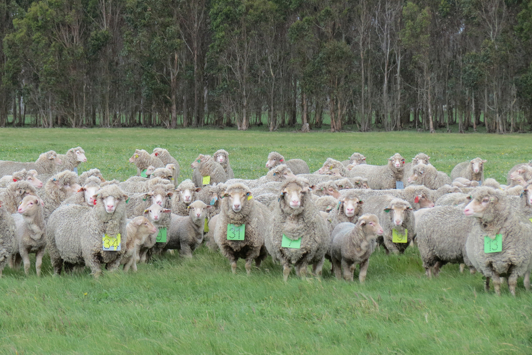The main parasites of sheep include worms, lice, flies, measles and liver fluke. The impact on sheep can range from being virtually undetectable, through to obvious clinical signs or even death.
Information and advice on how to best manage each of these parasites are detailed below.
Gastro-intestinal worm infections in sheep are a major cause of lost productivity to the Western Australian sheep industry and control has become more complex due to widespread drench resistance.
The main worms that affect sheep in WA are scour worms and to a lesser extent Barber’s pole worm which is more commonly found in Queensland and northern NSW.
Effective, sustainable control of sheep worms involves a combination of planned stock and farm management, monitoring worm burdens using faecal worm egg counts (WEC), strategic timing of drenches and the genetic selection of worm resistant sheep.
The challenge is to get good worm control without an increase in drench resistance.
For tools, webinars, bulletins and further information see also Paraboss.
Read more about:
The most common lice affecting sheep are body lice (Bovicola ovis). Knowledge of the lice life cycle and relevant features of their biology assists in our understanding of how lice survive and spread.
Better understanding and ability to find and monitor lice populations will improve sheep farmer decision making around managing lice. See also LiceBoss.
Reducing the risk of flystrike has immense benefits to the health and wellbeing of sheep, the people who work with them and business/farm productivity. Predicting your risk of flystrike will depend on environmental conditions as well as how susceptible your sheep are. See also FlyBoss.
Read more about managing flystrike in sheep
Managing non-mulesed sheep
The department ceased mulesing on its research stations in 2008 and since then has been collecting information regarding the management of non-mulesed sheep and reducing the risk of flystrike through genetics and management. This ensures that sheep producers have access to the best information and practical recommendations for managing flystrike in non mulesed sheep.
Researchers, sheep producers and industry came together for a 3.5 hour webinar to discuss how to make the move to a non-mulesed enterprise.
The webinar featured below, focuses on the planning, genetics and management required by sheep producers to make the move to a non-mulesed sheep enterprise. Information presented is current as at 21 September 2022.
Sheep measles (Taenia ovis - otherwise known as Cysticercus ovis, ovis) is a tapeworm parasite which can cause significant economic loss due to the rejection or trimming of sheep carcasses at slaughter, causing financial loss to the producer or abattoir.
The parasite is carried by dogs and is harmless to the dog, however the larval stage in sheep muscle results in an unsightly cyst which is not acceptable to consumers.
This serious parasite of ruminants and some other animals is not present in Western Australia, and a stringent quarantine process is in place to prevent its introduction from other states. It is essential to ensure familiarity with the entry requirements before importing livestock or horses into WA.

